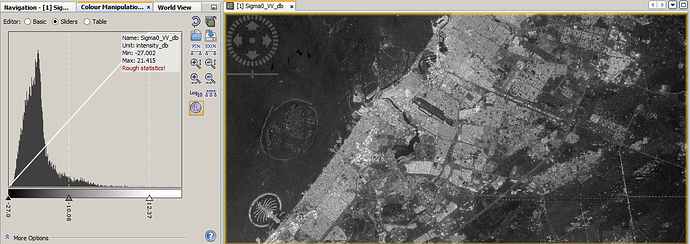the different colors are a result of the fact that extreme values are now closer together in the db image. They now range from about -40 to +10 instead of 0 to 10000. This reduces contrast in some parts of the image while highlighting structures in darker parts of the image.
It depends on what you want to do with the data. For exampe, if you want to apply a threshold to extract water bodies you won’t convert to db because they appear black already. But if you want to examine land use in the grey spectrum or apply certain filters you transform the data to db in order to enhance other things.
Have a look at the histograms to see the changes.
If you are just missing the contrast, play around with the color manipulation. Move the Min/max values and the mean:

